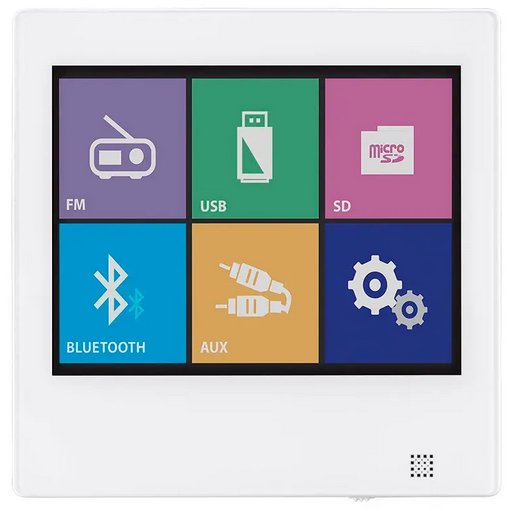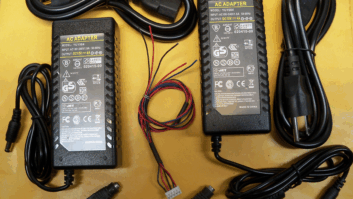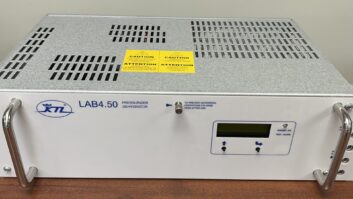
Broadcast engineer Dan Slentz writes that when he was a teen working at WJER(AM/FM), the chief engineer had a speaker in each room wired with multiple 70-volt audio lines to a rotating switch and volume control. “You could listen to the AM station, FM station or any of the three production rooms,” he said.
Being 70 V, the audio quality wasn’t especially great, but when you were working after hours and you went into a room, you could monitor Air or what was going on. Dan says every station he has ever worked at had audio monitoring in the bathrooms. Even at CBS station WLVQ, “QFM” in Columbus, where the bathroom was in a public area down the hall, all occupants of the ninth floor of Nationwide Tower 2 could listen to QFM or Z-rock FM.
Dan recently visited the Monoprice website, www.monoprice.com. He loves it for its really good cables with lifetime warranty, and he says you can find other cool items on the site, like the old MCM Electronics used to have.
One such item was this 40-watt, wall-mount amplifier with a touchscreen, Bluetooth, auxiliary inputs and USB and microSD slots. The amp even has an infrared remote control. And it provides an FM receiver and stereo output.

Dan notes that of course, this is made offshore. But all this comes in a compact footprint and costs only $120.
The top image shows the USB and microSD slots on the underside of the module, and the wiring connections are shown below.

If it’s time to retire your old 70-volt speaker wiring or you’re thinking of adding a speaker monitor system, this module might be the solution. Consider mounting it in the breakroom, reception area or in your bathrooms. Use Monoprice product #36375. (As of mid-September the unit was listed as out of stock at the Monoprice website, with a November ETA.)
Sound Screw
If you’re planning new studio construction next year, you may want to discuss with your architect or acoustic consultant the newly released acoustic Sound Screw, developed in Sweden.
Imagine a screw, the “head” of which is separated from the threaded body with a coiled spring. It’s an inexpensive method of reducing vibration from joists into the drywall, as the spring dampens the vibration transfer.
Although it is only available in Sweden at the moment, Akoustos AB is approaching companies outside Sweden to license its technology.The company says that in lab tests, a 9 dB reduction of sound transfer was measured. This calculates to about half the perceived sound transferred using traditional drywall screws to hold sheet rock panels.
Check out www.akoustos.se.
Keep fans quiet
In an age when nearly everything seems to be in short supply, you may be tempted to substitute a fan in a piece of equipment. All fine and good, but contract engineer Stephanie Donnell has a caution if you’re installing a DC “brushless” fan in this situation. It could result in an EMC noise issue due to the current pulses generated by the driver circuit that operates the field coils of the fan motor.
EMC, electromagnetic compatibility, refers to the interaction of equipment with its electromagnetic environment and other devices. These electromagnetic fields could result in something that sounds like spark plug noise. You can correct this by adding a simple R/C filter on the fan’s “+” voltage lead.
Another tip involving muffin fans is to use models rated for 220 VAC but run them at 110. This is helpful in a situation where you need to improve ambient cooling around any equipment but where you don’t want a fan that produces a miniature hurricane or the noise associated with high-speed operation. Stephanie has used 220 V fans over the years to help cool everything from a very old computer to a Larcan-TTC TV translator.
Stephanie also saw Steve Tuzeneu’s recent tip about discouraging bees from nesting in satellite feed-horns. She adds that WD-40 brand spray lubricant works great for dealing with bees. We may not always have a can of flying insect spray, but who doesn’t have a can of WD-40 handy?
John Bisset, CPBE, has spent over 50 years in the broadcasting industry, and is in his 31st year writing Workbench. He handles western U.S. radio sales for the Telos Alliance and is a past recipient of the SBE’s Educator of the Year Award. Workbench submissions are encouraged and qualify for SBE recertification credit. Email [email protected].







